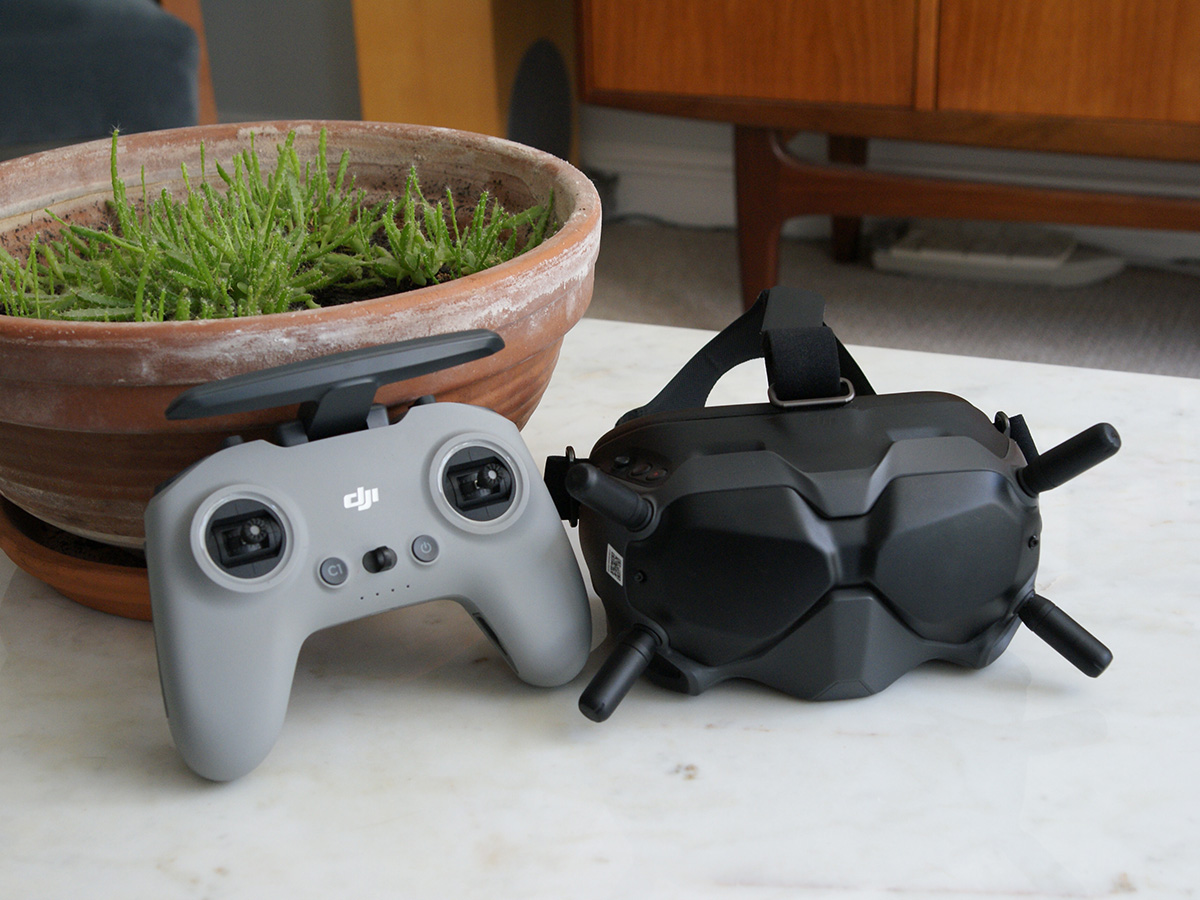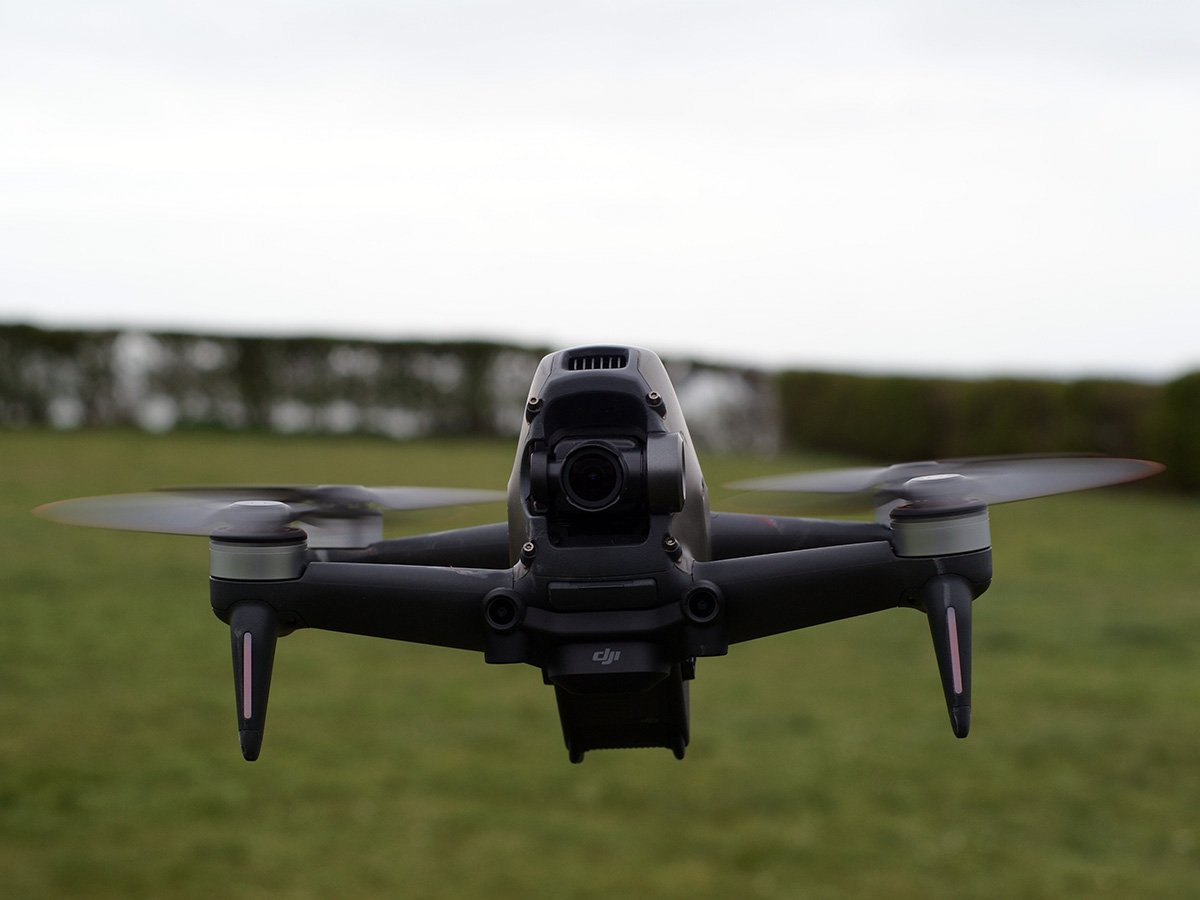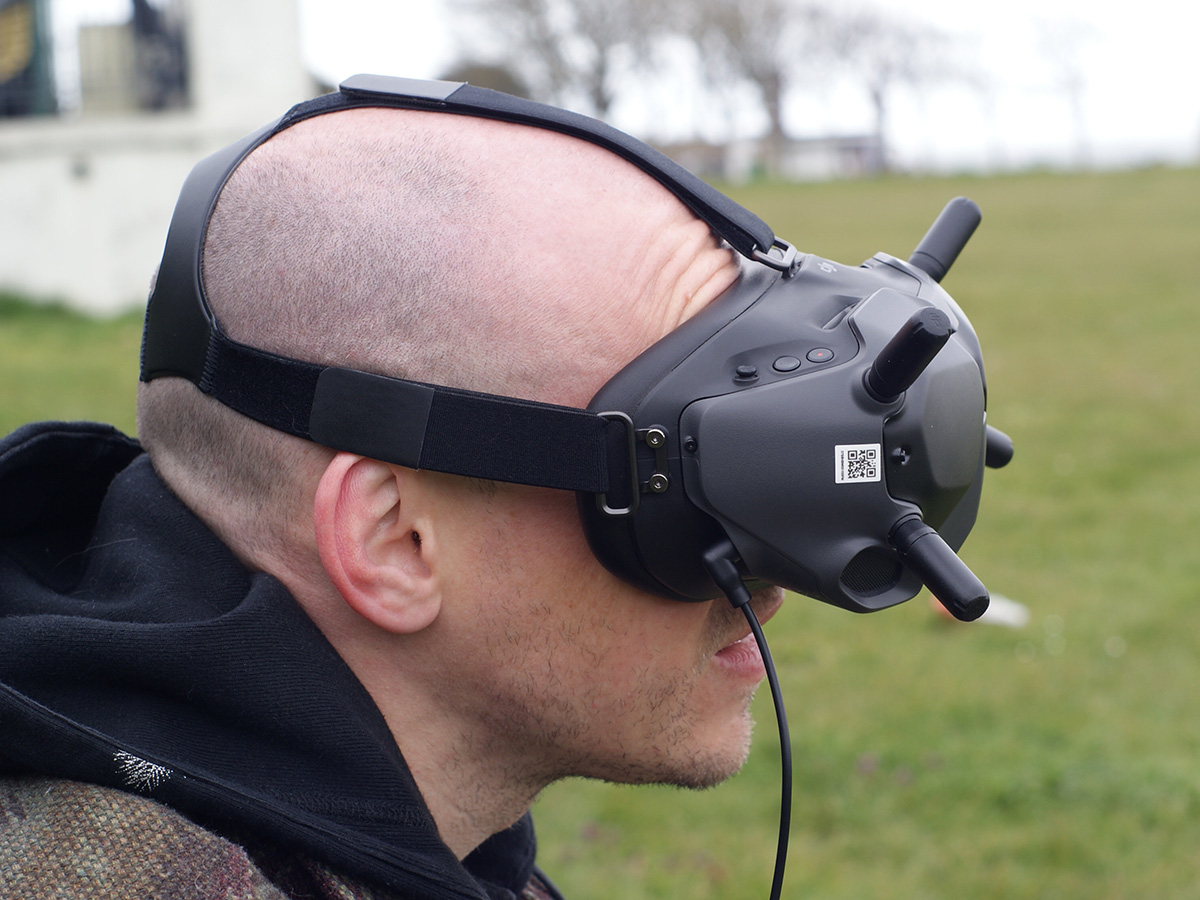DJI FPV review
DJI’s first first-person drone is friendly – and frightening

Even within the fairly exclusive hobby of drone flying FPV racing sits apart, jealously protected by a cadre of sniffy, soldering iron-toting gatekeepers.
Designed primarily with competitive racing and aerial acrobatics in mind, these are fast, twitchy drones you have to build yourself (or pay someone else to build) and fly with intense concentration – because a lack of anti-collision tech means one slight mistake can end in a costly crash.
Enter the DJI FPV to shake things up. Available fully built off-the-shelf and loaded with the kind of safety features that have made DJI the market leader in consumer ‘copters, this seems to be the drone to bring FPV antics to the masses. Can it turn an FPV noob into a seasoned racing pilot in one weekend? Let’s take to the skies and find out.
Design: Preassembled and poised

The FPV is as well packaged as any other DJI drone. Prying the lid off the box, I’m confronted with the quadcopter itself and the imposing, cyberpunk-esque FPV Goggles V2 headset nestled snugly in black packing foam. Beneath the foam is a twin-stick controller resembling a console gamepad, and a few boxes containing the manuals and the various propellers, antennae and cables required to get the drone charged, connected and airborne. Basically, everything you need is in this box – although it’s helpful to have a relatively recent smartphone handy too, for reasons I’ll explain in the next section.
The drone is a little smaller than I’d expected but exudes a quietly menacing air thanks to its forward-hunched poise and vaguely military finish. A camera sits underneath a removeable plastic gimbal guard, while the large battery slides into the back like the magazine of some bullpup assault rifle. The four propeller arms are fixed rather than folding, and the props themselves attach via a tool-free twist of your hand. It all looks very serious and sure of itself – although a lurid green body cover is also supplied if you want to make the drone easier to spot in the wild.
The FPV’s build quality is superbly solid, although I note with some alarm a number of scratches, grazes and marks on the surface; a previous reviewer has clearly pitched this thing into the ground on at least one occasion. On this evidence it’s certainly crashable, but also sturdy enough to emerge from a hot, unscripted date with terra firma suffering nothing worse than cosmetic damage.
A rubber cover below the camera pulls up to reveal a microSD card slot and a USB-C port The FPV Goggles V2 are lightweight and comfortable, even for a glasses-wearer like me. The eyepieces can be adjusted to suit your pupillary distance, while the soft head strap and foam liner make wearing it for extended periods a breeze. In terms of pre-flight assembly, all you need to do is attach the strap, screw in four small antennae by hand and then attach the battery pack via a long cable. While having a separate battery for the headset seemed strange to me at first (wouldn’t it be simpler to make it internal?), it keeps the headset nice and light on your noggin. And you want comfort when you’re flying the FPV, where a slight error can spell doom.
The headset comes with a microSD slot (you can also record footage here, although not at as high a quality as internally on the drone) and a few controls, including a “5D button” that gives you one-finger navigation of the on-screen menus. It’s here that you’ll adjust the drone’s flight, safety and camera settings; you don’t need to use the DJI Flight app on your phone at all when flying the FPV.
The controller is lightweight and sturdy too, and its removeable thumb sticks make it easy to transport in a rucksack without risking damage. There are dedicated buttons to start/stop video recording; adjust the camera pitch; return to home; toggle between the N, S and M flight modes; and engage the emergency brake. You can even pry the rubbery back covers off in order to adjust the stick resistance, should you wish.
Flight: Fast and furious

DJI recommends you spend some time with a simulator before taking the FPV for a real flight, so I fired up the DJI Virtual Flight app on my iPhone for a couple of hours of training. This Unreal Engine-powered game links your phone with the controller and headset to take you through the flight controls and modes, then allow you to pilot a virtual drone around a few different locations. I’ve been flying DJI drones for years, but the FPV is clearly a different beast – so this app is a vital confidence builder, as well as fun.
Once I’m a bit more familiar with the flying style, I venture out into the real world to take the FPV on its maiden flight. After being powered on, the drone emits a low robotic growl that I’m fairly sure fulfils no function except to make it sound (and you feel) bad-ass. A good start, I feel, as I flip the controller to N (Normal) mode. In this mode, the drone’s speed is limited, it hovers in place when the controls are released and its forward and downward obstacle sensors are engaged to lessen the chances of a collision. After a few minutes of comfortable N flying, I switch things up to S (Sport) mode, which increases the speed, turns off obstacle detection and makes things much livelier. Even so, the FPV feels responsive and easy to fly – even if I’m far too chicken to take it through any tight gaps or close to walls. There’s a cruise control switch on the controller that’s handy here: tap it and the drone maintains speed without the need to push the throttle stick. I also test the emergency brake, which brings the drone to a very noisy but almost immediate stop.
M (or Manual) mode is another story entirely. Here, the drone is able to loop and flip and the speed limitations are turned off, allowing the FPV to slice through the air at up to 140kph. As a relative greenhorn I don’t dare even attempt any M flying – best leave that until I’m a lot more confident with how the FPV moves, I think. In terms of control range, DJI claims a maximum of 10km – although taking the drone out of your visual range is technically illegal, so testing anything above a few hundred metres is impossible. Interestingly, the legal requirements mean you have to bring at least one other person with you when piloting the FPV, as you can’t technically see it while wearing the headset. I found the video transmission rock solid during my time flying the drone, with an almost constant 1080p feed beamed near-instantly from the drone’s camera to the headset’s crisp display – and that’s a huge boon when trying to fly accurately.
The battery life of traditional FPV drones has hovered around the five-minute mark, but DJI’s battery will be good for around 20 minutes of flight time, depending on wind speed. That’s low for a DJI drone (the Air 2S does about 31 minutes per charge), but excellent by FPV drone standards – and another example of how this drone opens the FPV field up to a wider audience.
Footage: Tilting at windmills
Having recently also flown the DJI Air 2S (a review of which is coming soon), I can say that the FPV isn’t a patch on its cheaper, slower cousin when it comes to dynamic range, detail and smooth gimbal-stabilised footage. The FPV’s camera sensor is smaller, which means overall image quality isn’t as sharp or clean, and it lacks 3-way stabilisation so any major tilting will result in canted footage.
You can see that in my sample footage, which was filmed in typically blustery coastal conditions. The FPV is more than capable of battling against the wind, but its camera isn’t designed to stay level with the horizon in those situations. To expect it to hit the same marks as the Mavic and Air drones isn’t really fair though – this is designed with speed and audacity in mind, allowing you to zip through small gaps and get into spots where those other drones wouldn’t go.
My lack of experience and desire not to destroy or lose £1,250 worth of review sample or decapitate hapless octogenarian dog walkers meant I wasn’t flying in the way hardened FPV veterans would, so apologies for the lack of insanely dangerous-looking shots here. What you should be able to see is that the footage is of a pretty impressive quality, even if it can’t match the 10-bit, 1in sensor business you’d get from the slower, more imaging-focussed drones.
Interestingly, the FPV also records sound (other DJI drones don’t), so you can hear the angry bee whine of the thing as it careens around.
DJI FPV verdict

The FPV is a ground-breaking drone, bringing the notoriously difficult world of FPV flight into the consumer fold. Buy this box and you’re basically good to go – but be warned that you’ll need many hours of practice before you can pull off the sort of spectacular stuff you might have seen on YouTube.
The FPV isn’t idiot-proof by any means, and a lack of care or concentration could see you left with a broken drone or worse. It’s not close to offering the same level of image quality as you’d get from a Mavic 2 or Air 2S either, and as someone who’s more interested in photography and video than tech toys I’d much rather spend my money on one of those than the FPV.
That said, given that it’s DJI’s first FPV drone it’s a very impressive package. It flies well and relatively safely, its footage looks good and it offers more battery life than anything else in its class. I’m glad I didn’t end up dunking it in the English Channel.
Stuff Says…
DJI has taken FPV flight to new, more accessible heights
Good Stuff
Relatively safe to fly
Good video quality
Long battery life
Bad Stuff
Gimbal tilt
You can still crash it



